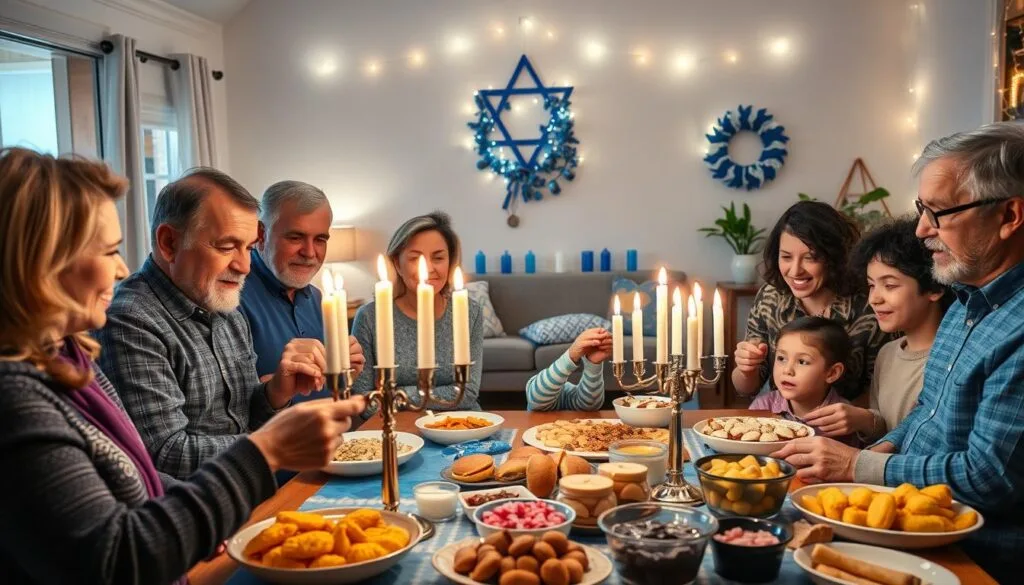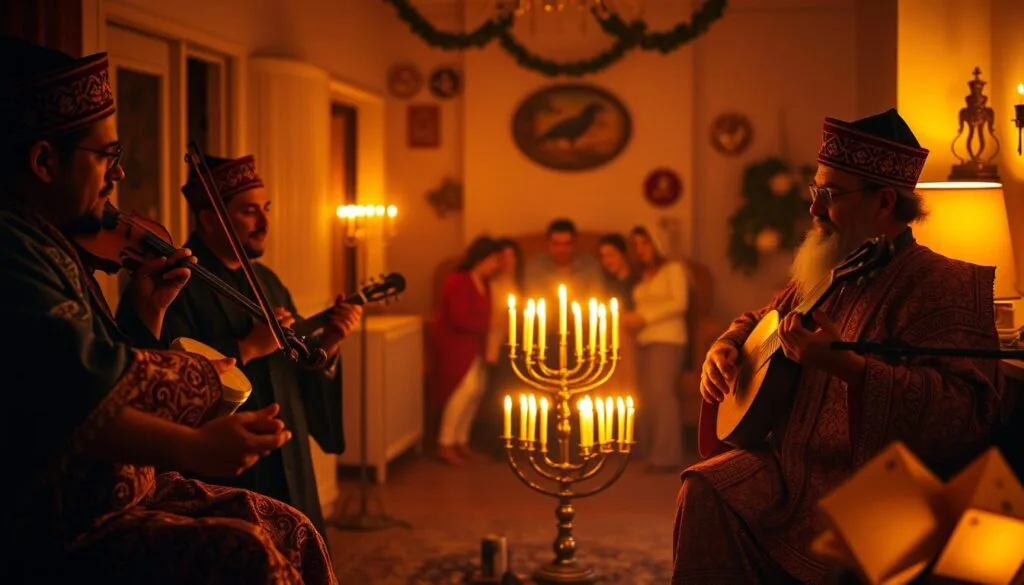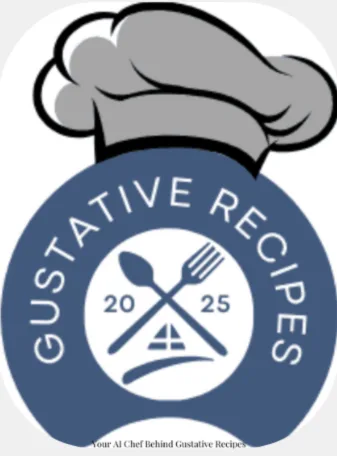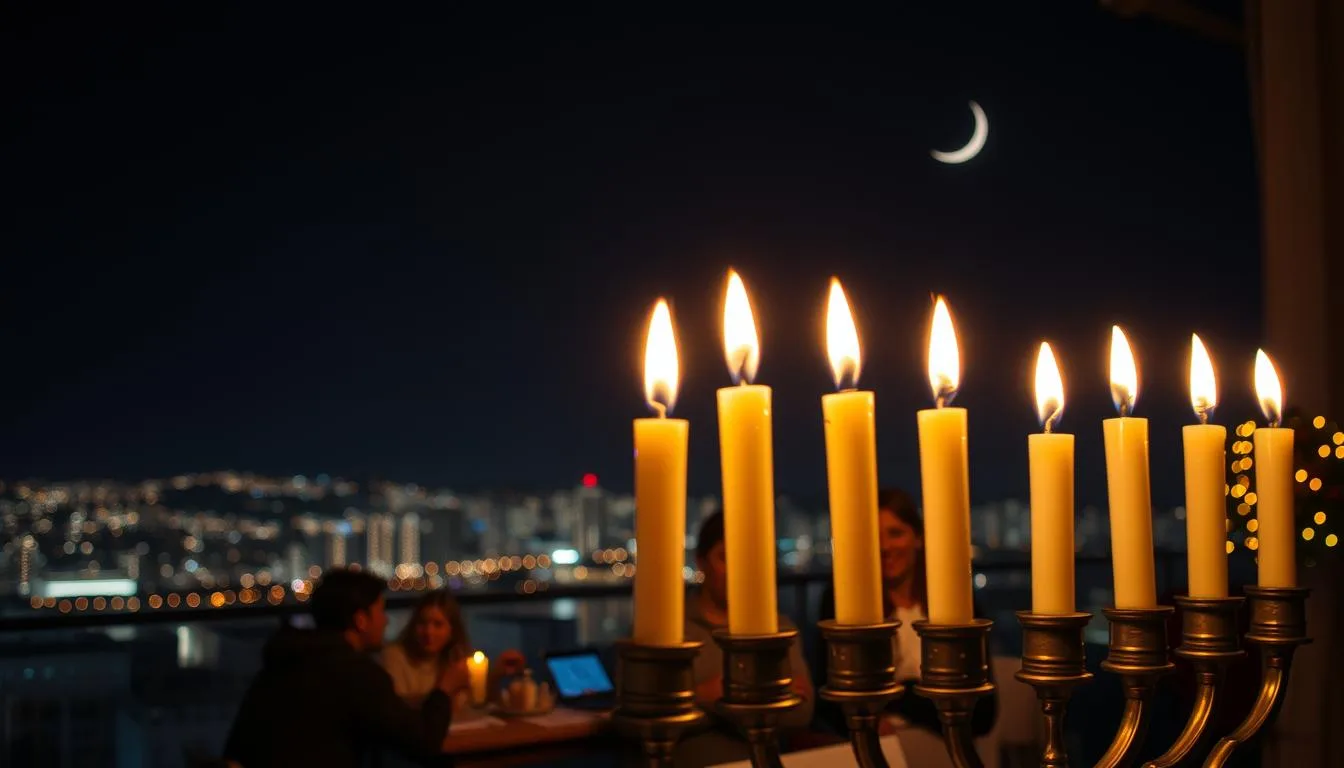The soft glow of a menorah on a winter night is magical. Its flames whisper stories of courage and hope. As the first candle lights up, I think about Hanukkah’s true meaning. It reminds us that light always wins over darkness.
Whether you light the menorah every year or are new to it, this journey is for you. Hanukkah is a mix of history, faith, and joy. It’s a celebration of resilience passed down through generations. Let’s see how eight nights of candles, songs, and meals can connect us to our traditions and hearts.
Every year, the story of the Maccabees and the oil jar is a powerful message. It tells us that even a small light can shine brightly. Hanukkah teaches us to value warmth, find strength in stories, and share light with others.
What is Hanukkah?
Let me share a little about Hanukkah’s roots—the Hanukkah history that makes this holiday so meaningful. This festival of lights isn’t just about candles and celebration; it’s a story of resilience woven into Jewish heritage.
Historical Significance
Over two thousand years ago, a small group of Jews—the Maccabees—fought to reclaim their spiritual home. When they rededicated the Temple in Jerusalem, they found only enough oil to light the menorah for one day. Yet it burned for eight. This miracle became the heart of Hanukkah’s message: hope in dark times.
Key Dates in the Celebration
| Hebrew Calendar | 25 Kislev to 2 Tevet |
|---|---|
| Gregorian Calendar | November–December (varies yearly) |
Each year, we light the menorah for eight nights, following the Hebrew calendar’s rhythm. This timing connects us to ancestors who celebrated under the same winter stars.
Connection to Jewish Identity
Imagine lighting a candle and feeling threads of history wrap around you—that’s what Hanukkah does. It’s a reminder of cultural survival, a bridge between ancient struggles and modern pride. Through stories and rituals, families pass down values of faith and courage.
“Hanukkah isn’t just a holiday—it’s a living memory.”
Every flickering flame whispers of resilience. Whether you’re Jewish or curious, this holiday invites all to find light in tradition.
Traditions and Customs of Hanukkah
Every year, Hanukkah traditions bring families together. They light up the darkest winter nights. These customs connect generations and fill our hearts with joy.
Lighting the Menorah
The menorah is at the heart of Hanukkah. We light its candles, one more each night. The shamash, or helper candle, guides us.
This ritual shows us hope shines in darkness.
Playing Dreidel
Who doesn’t love playing dreidel? This spinning top tells of a great miracle. It’s a game of resilience.
My grandmother said,
“The dreidel’s spin teaches patience—sometimes you win, sometimes you share, but you always play with heart.”
Eating Traditional Foods
Let’s talk about the feast! Hanukkah celebrates with special foods like:
- Latkes—golden potato pancakes crispy on the outside, soft within
- Sufganiyot—sweet jelly-filled doughnuts
Each bite honors the oil that burned for eight days.
These customs are more than routines. They’re stories that warm our hearts. They turn ordinary nights into moments of connection and love.
The Celebration of Light
The Hanukkah menorah tells a silent story, with flames whispering tales of courage. Every night, as we come together, those lights remind us of hope in darkness. Let’s explore the heart of this shining tradition.
Symbolism of the Hanukkah Lights
Each flame on the Hanukkah menorah has a special meaning. The shamash, or helper candle, lights the others, showing kindness’s power. As we add a new candle each night, we see how small actions can lead to big changes. Light grows stronger when we nurture it.
The Miracle of the Oil
Long ago, a small amount of oil lasted for eight days. This miracle taught us that even in scarcity, abundance can grow. That tiny jar of oil showed us to never give up hope. Hanukkah is about believing in the impossible.
Spiritual Reflections
Lighting the Hanukkah menorah invites us to pause and reflect. We ask ourselves: Where do I find hope today? How can I be a beacon of warmth for others? Many display their menorahs in windows, sharing light with their neighbors.
This act of kindness turns personal joy into something that inspires everyone. As we reflect, we see how tradition connects us to our past and present. The Hanukkah menorah’s glow encourages us to care for both our bodies and souls. For meals that honor this spirit, explore shared dishes that deepen our celebration. The flames guide us to find light in every challenge, one candle at a time.
Family and Community Gatherings
There’s something special about coming together during Hanukkah. The menorah’s light shines brighter when we share it with loved ones. Stories told at dinner and laughter filling the house are the season’s heart.

At its core, Hanukkah teaches us to celebrate together. Let’s see how these bonds strengthen our traditions and spirits.
Importance of Family Time
Imagine grandparents sharing stories from their Hanukkahs or a child’s first time lighting the menorah. These quiet moments shape our memories. Family rituals like passing around latkes or playing dreidel games create lasting bonds.
- Sharing stories across generations
- Hands learning to light the menorah together
- Meals filled with laughter and tradition
Community Events and Activities
Outside our homes, Hanukkah fills streets and synagogues. Public candle-lightings and community feasts show we’re part of a bigger story. Schools host interfaith gatherings, and neighborhoods buzz with joy. Learn how these traditions strengthen connections in our guide to communal Hanukkah practices.
These shared spaces turn personal joy into collective strength. They remind us, even in a busy world, there’s time to pause and cherish what’s important.
The Role of Gifts during Hanukkah
Gifts in Hanukkah are special, mixing tradition with joy. For many, Hanukkah gifts start with gelt—golden coins for kids. This tradition celebrates freedom and renewal.
Over time, it has grown into thoughtful exchanges. These gifts show both heritage and modern life.
Traditional Gift-Giving Practices
In the past, gifts were simple like gelt or Jewish story books. Today, families still value these simple gifts. They often add handmade items like kippahs or recipe cards.
The focus is on the connection, not the price.
Modern Trends in Hanukkah Gifts
Now, gifts might be experiences, like a trip to a Jewish center. Or, they could be donations to charity. Here are some ideas:
- Cultural Keepsakes: Judaica like silver dreidels or mezuzahs
- Experiential Gifts: Cooking classes for traditional recipes or tickets to a Hanukkah play
- Sustainable Choices: Eco-friendly menorahs or organic chocolate gelt
| Category | Examples |
|---|---|
| Books | Children’s tales about the Maccabees or poetry collections |
| Art | Paintings of the menorah or handcrafted pottery |
| Charitable Giving | Donations to food drives in a recipient’s name |
Choosing Hanukkah gifts that spark curiosity or generosity is key. It turns simple presents into connections between past and present. Let’s keep the spirit of giving rooted in love, not just the act itself.
Hanukkah Music and Songs
traditions come alive through music. It weaves history and joy into every note. Songs like Maoz Tzur and “I Have a Little Dreidel” carry the spirit of the Festival of Lights. Music has been part of Hanukkah for centuries.
The Milken Archive explores how these sounds shape our shared memories. They show Hanukkah’s musical journey through generations. Learn more about Hanukkah’s musical journey.

“They shall capture as spoil the weapons of warriors”—a line from Maoz Tzur, echoing the Maccabean triumph.
Popular Hanukkah Songs
These melodies anchor our celebrations:
- Maoz Tzur – A timeless hymn recounting the Maccabean victory, sung after lighting the menorah.
- “I Have a Little Dreidel” – A playful tune teaching children the holiday’s stories through rhyme and rhythm.
- Adam Sandler’s “Hanukkah Song” – Celebrating Jewish pride with humor and modern flair.
| Traditional Songs | Modern Songs |
|---|---|
| Maoz Tzur | Adam Sandler’s “Hanukkah Song” |
| “Sevivon Sov Sov Sov” (Dreidel Song) | “Latke Rock” by The Klezmatics |
| Symbolize faith and resilience | Blend tradition with pop culture |
Significance of Music in the Celebration
Music is the heartbeat of Hanukkah traditions. It bridges past and present. When we hum Maoz Tzur around the menorah, we honor ancestors who fought to keep our heritage alive.
Modern hits like “Candlelight” by Matisyahu add fresh rhythms without losing the holiday’s soul. These sounds create bonds—voices rising together, whether in living rooms or synagogue choirs. They remind us that traditions aren’t just heard—they’re felt in our hearts.
Hanukkah Recipes to Try
The kitchen comes alive during Hanukkah. The sound of oil crackling, the golden color of fried foods, and the warmth of family recipes. Let’s dive into recipes that blend tradition with creativity.
Classic Fried Foods
Begin with the classics that celebrate the oil’s miracle. Potato latkes are a must, with their crispy outside and soft inside. Make sure to squeeze out excess moisture for the best crunch.
Sufganiyot, or doughnuts, are also a favorite. Fill them with jam or cream and dust with powdered sugar. For beginners, start with store-bought dough or my simple yeast recipe.
Creative Variations for Modern Celebrations
Don’t just stick to tradition. Try sfenj, a North African doughnut, or bimuelos, delicate fritters. For a lighter option, bake latkes with almond flour or make zucchini latkes. Need gluten-free? Use cassava flour and eggs.
Cooking is about connecting with our heritage and personal tastes. Whether flipping latkes or trying new flavors, the joy is in sharing with loved ones. Happy frying, baking, and innovating!
Popular Hanukkah Decorations
Transforming your home into a sanctuary of light and joy during Hanukkah is special. decorations are more than looks—they tell stories of heritage. Let’s explore how to make your space feel timeless and personal.
Rooted in Tradition: Timeless Hanukkah Touches
Begin with symbols that hold deep meaning. A central menorah is key—pick from handcrafted silver or vibrant ceramic. Hang dreidels on mantels or as garlands. Soft blue and white linens add a classic touch. “The simplest decorations often hold the most heart,” says a family’s story of displaying great-grandparents’ menorahs.
- Menorahs in various materials (ceramic, metal, or glass)
- Embroidered blue-and-white table runners
- Hand-painted dreidel ornaments
Making It Yours: Modern Twists on Tradition
Show off your creativity with new ideas! Use gold foil stars or metallic garlands for a modern look. Families can make their own decorations, like paper menorahs or painted dreidels. Mixing silver and gold with traditional blues adds a modern touch while keeping cultural roots.
| Traditional | Modern |
|---|---|
| Candlelit menorah displays | Solar-powered LED menorah lights |
| Hand-stitched challah covers | Geometric-patterned velvet throws |
| Embroidered wall hangings | 3D-printed dreidel sculptures |
Remember, the true magic is in the menorah’s light. Let those golden flames guide you to a celebration that’s as unique as your family.
How to Celebrate Hanukkah in Diverse Communities
The celebration shines bright, connecting people from all walks of life. It’s a time to share traditions with neighbors, friends, and coworkers. This makes the Festival of Lights a moment of warmth and understanding for all.
Inclusivity in Celebrations
When you invite others to your Hanukkah, think about their dietary needs. Serve dishes like oil-based dishes and dairy options. Let everyone join in, whether it’s spinning the dreidel or lighting the menorah.
For families with different faiths, mix traditions. Sing carols and Hanukkah songs together. This way, everyone feels included without losing the holiday’s essence.
Engaging with Non-Jewish Friends and Neighbors
When you invite neighbors over, explain Hanukkah’s traditions simply. The menorah’s eight candles stand for hope. Potato latkes celebrate the miracle of oil.
Share stories of resilience and community. Encourage questions. Schools and workplaces can also host menorah-lighting ceremonies or potlucks. These events spark curiosity and build bridges.
Every Hanukkah celebration is a chance to strengthen connections. By welcoming others into our traditions, we keep the Festival of Lights alive for everyone.
FAQ
What does Hanukkah celebrate?
Hanukkah, also known as the Festival of Lights, celebrates a miracle. It’s about the oil that lasted eight days when the Second Temple in Jerusalem was rededicated. It shows resilience, faith, and the light of hope.
How is the menorah lit?
The menorah is lit by adding one candle each night for eight nights. The shamash (or helper candle) lights the others. This shows the joy and light growing as the festival goes on.
What traditional foods are associated with it?
Traditional foods include crispy potato latkes and sweet sufganiyot (jelly doughnuts). These dishes celebrate the holiday and create memories for families.
Are there specific Hanukkah gifts?
Gift-giving includes chocolate gelt, small presents, or charity donations. Families have their own traditions, balancing gifts with meaningful experiences.
How does music influence celebrations?
Music makes Hanukkah celebrations lively. Traditional songs and fun tunes fill homes with joy. They bring generations together and strengthen community bonds.
What are some creative ways to decorate?
Decorating involves traditional elements like menorahs, dreidels, and blue and white decorations. Families create spaces that are warm and celebratory, focusing on the menorah’s light.
How can I engage with non-Jewish friends?
Sharing Hanukkah with non-Jewish friends is a great way to learn and share traditions. Hosting gatherings and explaining rituals can build understanding and connection.
What is the significance of the Hanukkah festivities in Jewish culture?
Hanukkah is deeply meaningful in Jewish culture. It shows resilience and faith in the face of adversity. The festival’s customs remind us of the Jewish spirit’s strength and historical struggles.
We are interested in your feedback
There are no reviews yet. Be the first one to write one.

